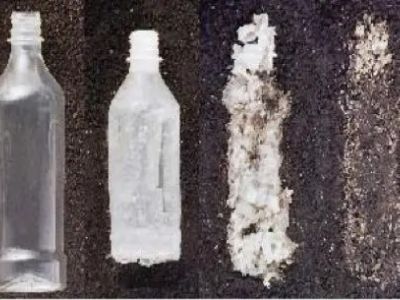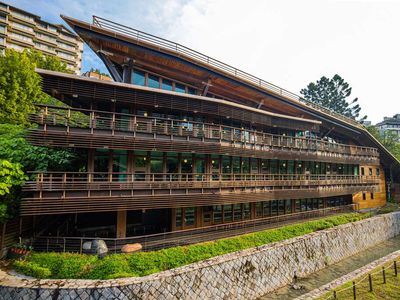Actions we can take
Climate change is an issue that affects every human on this planet. If left untreated, this problem will plunge Earth into a massive and rapid downfall into utter destruction and take the future of humankind with it. Hence, what are some ways we can help prevent climate change from spiraling out of control?
Coral Reefs Protection
Recycle and Dispose of Trash Properly
Human activities on land often lead to the creation of trash that flows into the ocean as marine debris, causing contamination and destruction to coastal habitats, which is also incredibly harmful to coral reefs. For example, plastic bags, fishing gear, and bottles in the ocean might entangle coral reefs and marine organisms or block sunlight needed for animal survival. Therefore, people should dispose of trash properly in bins and trashbags or recycle, reuse, and reduce plastic to prevent additional debris from washing into waterways and oceans. When visiting beaches and coastal areas, people should not leave plastic bottles, fishing nets, and cigarette butts in the sand. Frequent ocean, river, and stream cleanups can also prevent marine debris from increasing, protecting coral reefs.
Minimize Use of Fertilizers
Agricultural and residential fertillizers contain chemicals and nutrients such as nitrogen and phosphorus compounds. While these nutrients are generally beneficial for ecosystems, coral reefs are more adapted to a low-nutrient environment. In fact, excessive nutrients can cause the growth of algae that blocks sunlight from reaching coral reefs ecosystems and consume oxygen needed for cellular respiration. Hence, people can replace synthetic fertilizers such as coffee grounds and tree leaves. Of course, it would be best if people stop using of fertilizers altogether.
Save Energy and Stop Using Fossil Fuels
The increase of greenhouse gases such as methane and carbon dioxide contributes to ocean acidification and warming, resulting in coral bleaching. To prevent the emission of greenhouse gases, people should change methods of transportation. For example, instead of driving cars, people can walk, bike, or take public transportation like trains and buses. When purchasing a car, people can consider fuel-efficient vehicles such as electric or hybrid cars. Moreover, saving electricity by turning off lights and electrical appliances can prevent global warming, which prevents coral bleaching.
Be Careful When Purchasing Fish
Overfishing and coral harvesting might severely upset the coral ecosystem, causing massive coral bleaching and death. Therefore, when purchasing aquarium fish or seafood, people should make sure that they have been collected in a suitable method from an appropriate source.
Climate Change Prevention
Government
Taiwan’s government, in particular, has a series of plans to limit plastic use. In 2002, the Environmental Protection Agency tried to ban free plastic bags and plastic disposable utensils in specific public places, but the scope has been limited for many years. Even as of 2022, it is still impossible to completely ban them. However, the government is making efforts to ban all disposable plastic use by 2030. We can achieve this by gradually increasing banned products and rent reusable shopping bags in traditional or night markets, helping citizens become more used to a plastic-free life. Besides banning certain plastic products, the government has already banned the production of toothpaste, face wash, and other hygiene products containing plastic microbeads in 2018. This achievement successfully improved the health of both humans and marine ecosystems in Taiwan.
At home
People can develop habits that might benefit the environment. For example, people can learn to turn off appliances such as air conditioners and lights when they are not used. As a result to this habit, less electricity created from unsustainable methods would be used. Moreover, doing laundry and using dishwashers only when there is a full load, or reusing rainwater for washing vehicles or watering plants might also benefit the environment by saving water. Lastly, people should develop a habit of separating trash and recyclable items. There are several benefits to this activity, such as reducing the amount of waste sent to landfills and incinerators, conserving limited natural resources, preventing pollution by reducing the need to collect new raw materials, and saving energy to process new materials. Although these habits seem insignificant, we can certainly make a difference if everyone put efforts into environmental conversation activities.

In school/office areas
Besides practicing environmentally friendly activities at home, people can also learn to be eco-friendly in school or workplaces. Firstly, schools and offices should promote the use of recycled or recyclable supplies. Schools, for example, can allow students to reuse textbooks from the previous year so that less textbooks are printed, conserving paper. Not only textbooks can be reused, schools and workplaces can offer other recycled paper products such as sticky notes, printing paper, tissues, and paper towels. Excessive printed documents can also be replaced by a virtual working environment. People can make announcements, exchange information via email, and use a cloud for document sharing. It would be even better if unnecessary plastic supplies such as brand new binders and folders are limited in workplaces. People do not need brand new supplies every once in a while; if every item is stretched further, we can save both money and the environment.
.dd257728_Z1DHaJ8.jpg)
In the public
Hospitals/banks/post offices/libraries
Nowadays, people also try to be environmentally friendly when constructing facilities such as hospitals, banks, post offices, and libraries. Some methods used to achieve this are improving energy efficiency and regulating water use. By utilizing our resources, we can conserve them for running more infrastructures effectively. For example, the Beitou Library in Taipei uses electricity produced from solar panels on its roof. There are 96 solar panels, and they can create 69 thousand watts of electricity per hour. Lights, fans, and air-conditioners are used limitedly to conserve electricity. Instead, natural sunlight is used to illuminate the library, and windows are open for circulating air. Moreover, there are rainwater recycling systems on the roof that collect rainwater for flushing toilets and watering plants. By using electricity and water efficiently, the library can function more sustainably.

Stores/shops/restaurants
Everybody loves going on a shopping spree, right? However, it is also important for us to be eco-friendly when we’re spending money - in stores and restaurants alike. One way for us to shop in an environmentally friendly way is keeping track of our carbon footprint. Firstly, we can choose to shop in eco-friendly stores that sells recyclable or biodegradable products. To determine if the company or store supports environmentally friendly products, you can check the company’s website or read other customers’ reviews. Impulsive buying is also a hazard for the ecosystem. When people buy without thinking, they might buy a tremendous amount of things they do not need, and the items end up in landfills in no time, which can be extremely harmful as they are a source of pollution and greenhouse gases. In addition, eating some food such as beef is not eco-friendly as well, since much greenhouse gases and pollution are produced during the raising process of these livestock. Hence, when eating in restaurants, we should be cautious of our carbon footprints by choosing our meals wisely.

Gyms/parks/amusement parks/swimming pools
When building public places such as gyms, parks, amusement parks, and swimming pools, we must consider their environmental impacts to surrounding areas. For example, if an amusement park is built on a mountain, would the construction severely disrupt the fauna and flora in the nearby ecosystems. Whether the facilities leave carbon footprints or use unsustainable energy sources must be taken into consideration too. Do the advantages these buildings bring outweigh the environmental drawbacks? Are there ways to mitigate these drawbacks, or are these projects unnecessary in the first place? By evaluating the pros and cons of building public facilities, people can keep the entire community more environmentally friendly.
